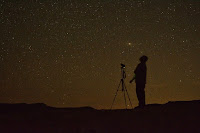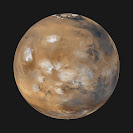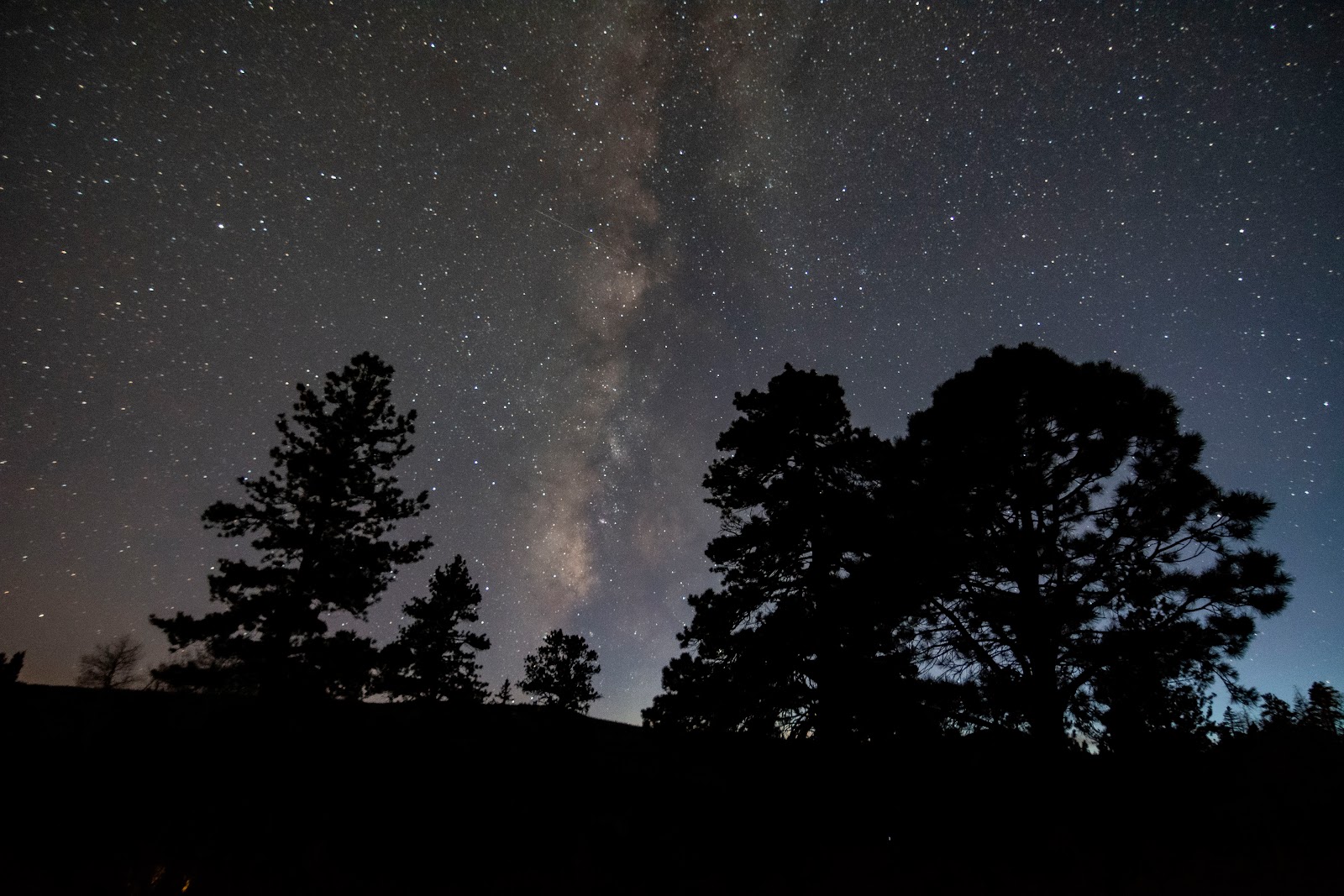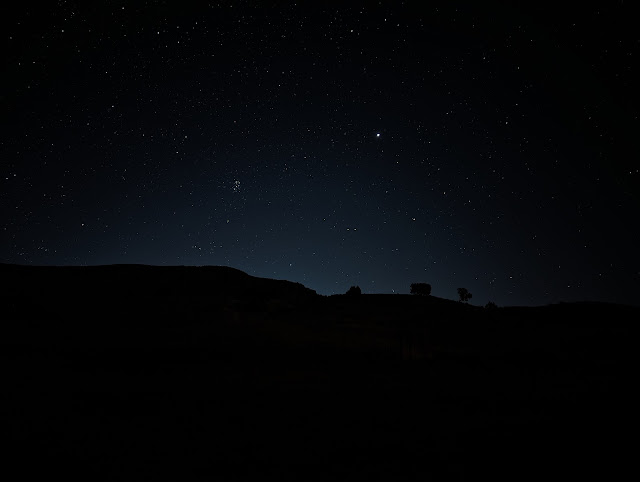Introduction and Monthly Reminders
December has been cold and hazy over Utah during the first half of the month. The haze, of course, has been caused by the infamous inversion that Utah experiences during the cold months. This inversion is generally bad for everyone, especially those individuals with breathing problems like asthma. For those unfamiliar with the Salt Lake Valley inversion, it's like fog full of pollutants, including vehicle emissions, factory emissions, and smoke. A large storm will usually blow the inversion out of the valley, but Utah hasn't seen a storm for a couple of weeks now. Needless to say, the inversion prohibits most stargazing unless an individual can travel away or above the haze. Bright objects, such as the Moon and Venus in the western sky, were easy to detect during the first few days of the month. Saturn was more difficult to spot, but I could pick it out through the haze, only to lose it once I shifted my gaze elsewhere. Jupiter and the bright stars of Orion were also easy to spot, along with Sirius, the brightest star in the sky.
I am looking forward to a large storm to clear out the inversion so I can enjoy Mercury reaching its greatest western elongation on the 24th. I will also try to catch some of the Ursid Meteors during the Last Quarter Moon phase. If the time and weather allow during the busy holiday season, I encourage others to look up at the heavens to see the sights of the universe!
Best of 2023
I neglected to share my best astrophotography images from 2023, so this post will do just that! I have included some of these images in previous posts but did not include much of a description, if any at all. Overall, 2023 was a busy year for me so I wasn't able to go on as many stargazing outings as I would like, but nevertheless, here are my best images from 2023.
This first set of images was taken on 10 February from Utah's west desert area. It was a cold but clear night, so I thought I should take advantage of the opportunity to take some pictures! My primary targets were Orion and the Zodiacal Light. This first image shows Orion in the upper right and the skyglow from Salt Lake City. I was also able to get some of the snow on the mountains in this image.
 |
| Orion Skyglow |
The next image was aimed a little higher above the horizon, capturing a bright Sirius near the lower left, followed by Orion, Taurus, and the Pleiades, forming a line. The faint Milky Way Band can also be seen to the left.
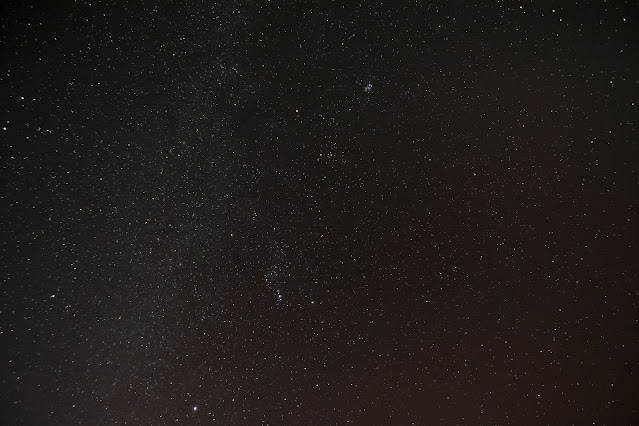 |
| Sirius, Orion, Taurus, Pleiades, and Milky Way Band |
I then aimed the camera a little higher to capture Orion, Taurus, and the Pleiades. I also captured the Milky Way band and a faint meteor between Orion and Taurus.
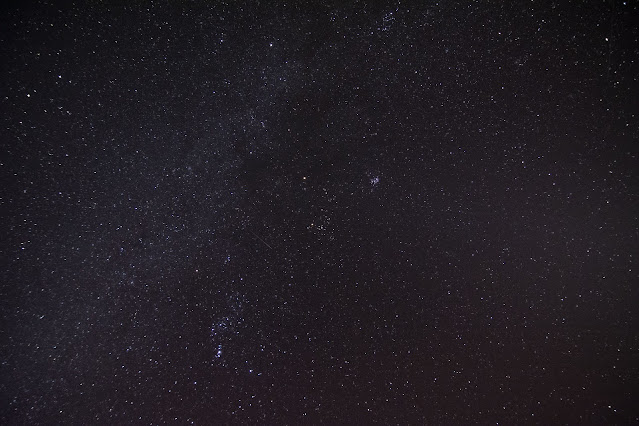 |
| Orion, Taurus, the Pleiades, Milky Way Band, and meteor |
The last two images captured this night show Venus and Jupiter setting in the west. The light in line with Venus and Jupiter is the Zodiacal Light, which is caused by dust particles scattering the light from the Sun. The Milky Way Band can be seen on the right side of the image. The Andromeda Galaxy is near the top center. If the image is expanded, a few faint meteors can be seen near Jupiter. Both images were taken at the same time, one with a DSLR camera and the other with my smartphone, showing the capabilities smartphone cameras have!
 |
| Jupiter, Venus, Zodiacal Light, Milky Way, Andromeda Galaxy, and meteors taken with DSLR |
 |
| Jupiter, Venus, Zodiacal Light, Andromeda Galaxy, taken with smartphone |
These next few images were taken from the same location eight months later, on 10 October. I only took my smartphone with me on this trip. This first image shows the Big Dipper near the northern horizon, with some structures in the foreground.
The next image shows Jupiter and the Pleiades rising above the mountains with a little bit of skyglow from Salt Lake City. I was impressed with the silhouette of the hills and trees against the starry background.
 |
| Jupiter and the Pleiades |
The final image shows a faint Milky Way Band being overpowered by an orange glow in the sky. The contrasting colors were interesting to me. A military base is in the direction of this light. I have taken thousands of pictures aimed this way, but this is the first time capturing this light. A passing car can also be seen in the foreground.
 |
| Contrasting Colors |
The following month, I went to Richfield, Utah for the Annular Solar Eclipse. I set up my camera on some farmland to capture the entirety of the eclipse with minimal interference from others. The eclipse lasted about three and half hours but I have converted it to a timelapse lasting only a minute and a half. Clouds can be seen passing through the video and several planes carrying individuals to Richfield for the eclipse can be seen. Near the end of the video, a cat, the only intruder, can be seen wandering the field. An annular eclipse isn't nearly as dramatic as a total solar eclipse with the only indication of an eclipse is the darkening sky and cooler temperatures during the peak. The darkness can be seen in this video. This video can also be found on my new YouTube channel! I took my binoculars and solar filters on this trip to enjoy the eclipse. I made several attempts to capture the eclipse through the binoculars with my smartphone but could not get any images worth sharing.

